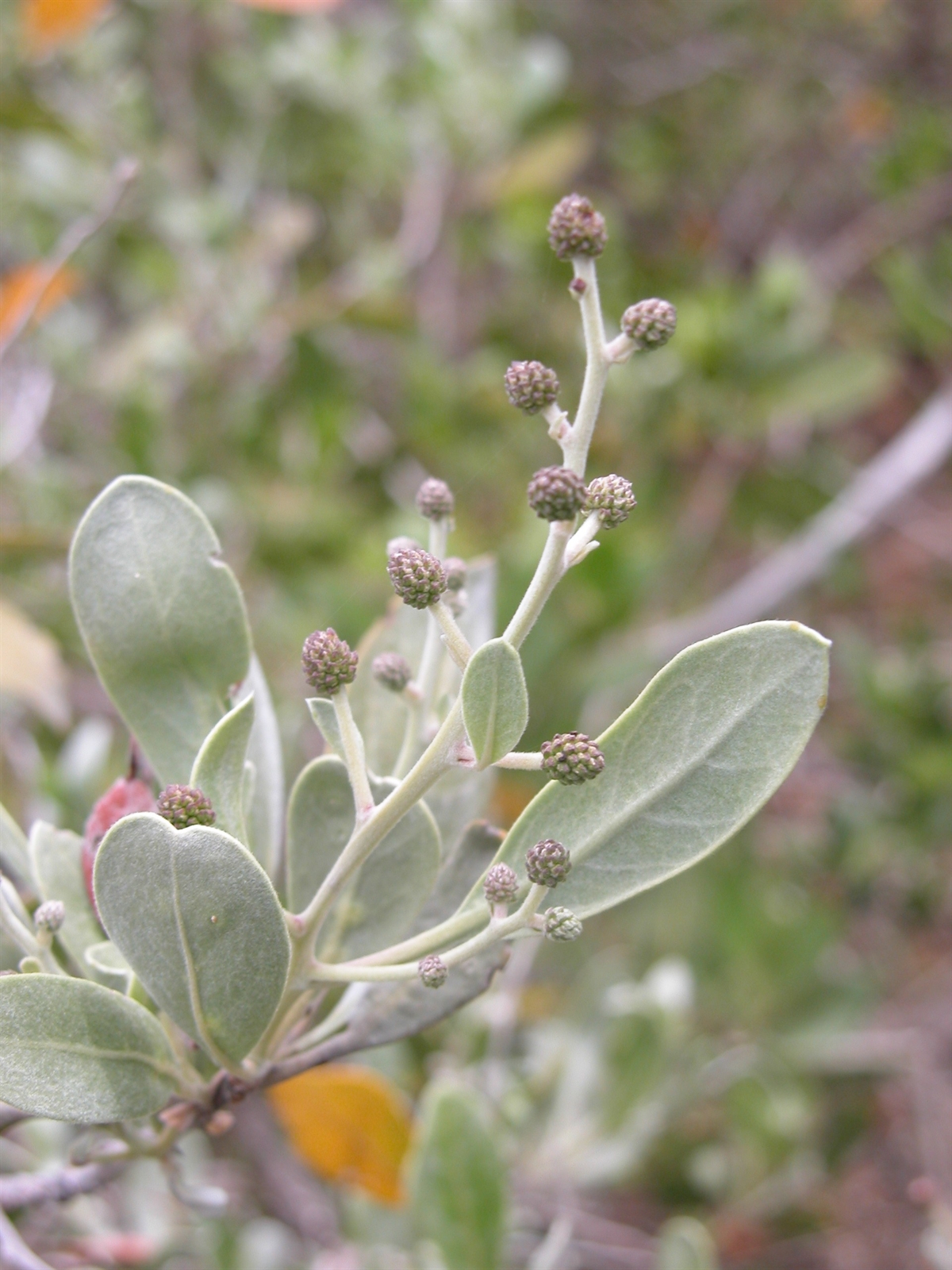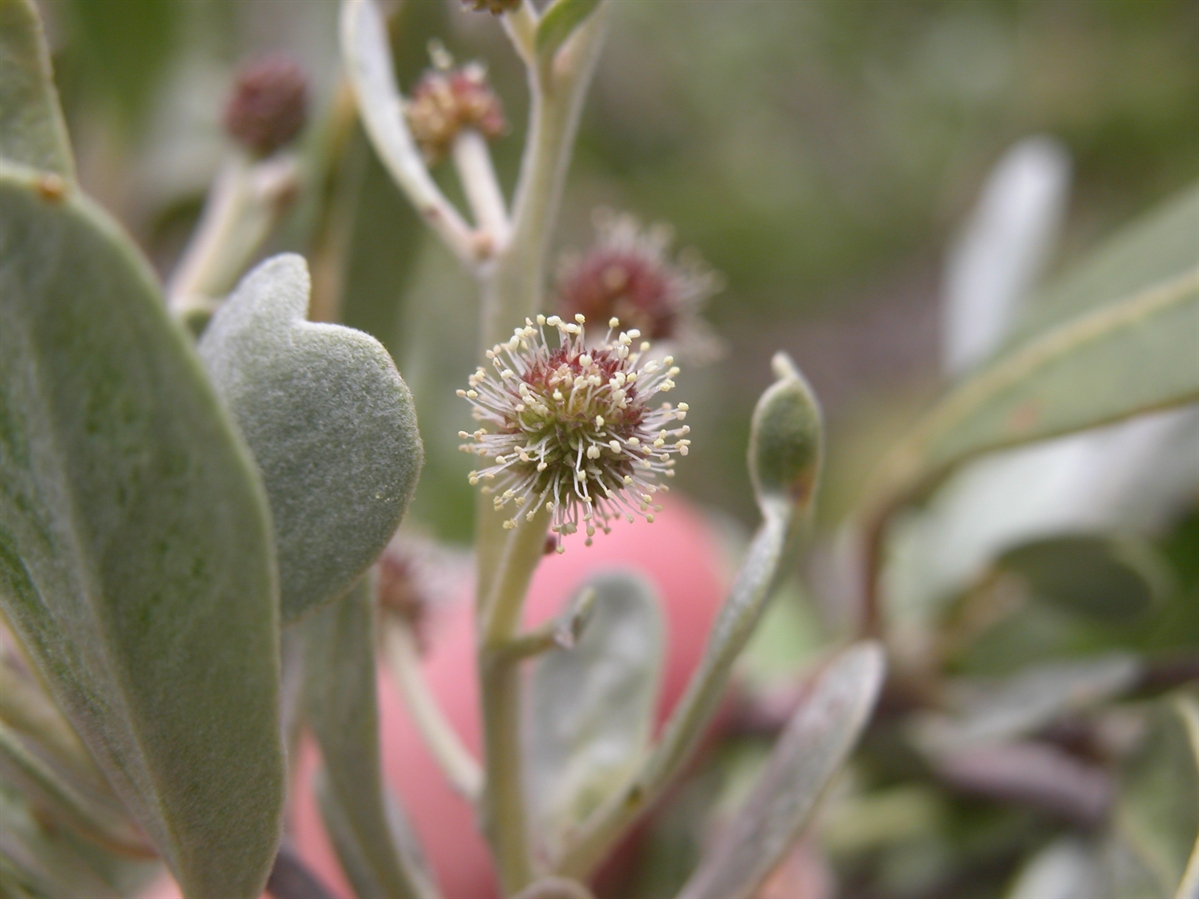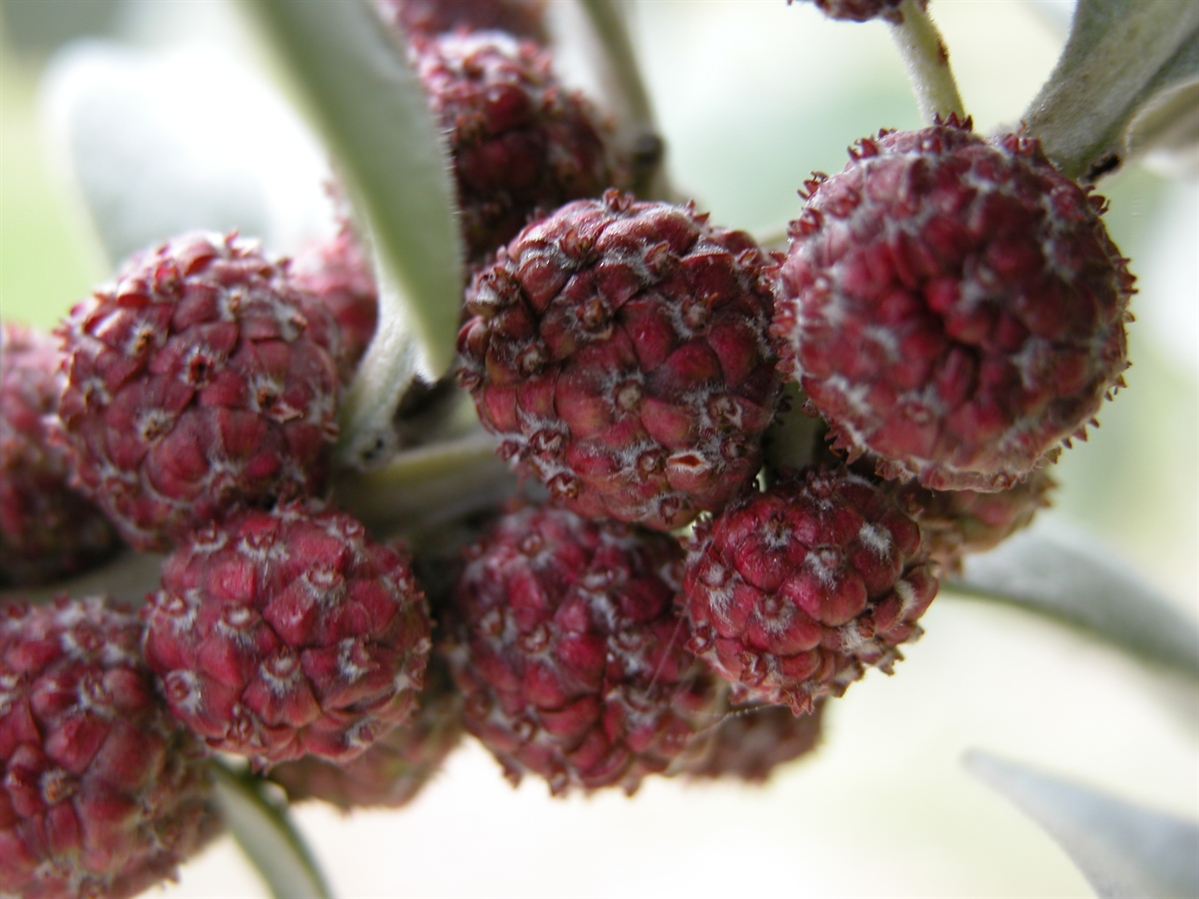Habit: Conocarpus erectus grows as a small shrub to large tree up to 20 meters in height. The leaves are arranged alternately, oval and up to 10 cm in length and can be covered with either a gray pubescence or be completely glabrous. The petioles have two glands at the leaf base.
The incomplete, perfect, flowers occur in heads that are arranged in a racemous fashion. The calyx has 5 partially fused sepals. The corolla is absent and there are 5 stamens. All floral parts are pubescent. The fruit is a drupe producing a flat winged seed.
Habitat: Conocarpus erectus occurs near saline environments along Dunes, Rocky Shores, and interior ponds but typically only in locations that have occasional flooding. They can also grow in upland areas when planted.
Distribution: Conocarpus erectus occurs throughout the islands of the Lucayan Archipelago, Florida, the Caribbean, Central and South America as well as Africa.
Medicinal/Cultural/Economic value: Conocarpus erectus has been used medicinally to treat sores and cuts as well as to cause “cascading” (vomiting).
The wood has been used for charcoal production because of how dense it is as well as in boat construction because of its durability in saline environments. It is also used as a fuel source for smoking fish and barbequing because of the unique flavor it brings.
Conocarpus erectus is widely used in the horticultural trade because of the silvery appearance of its leaves and does well in coastal areas with salt spray.


